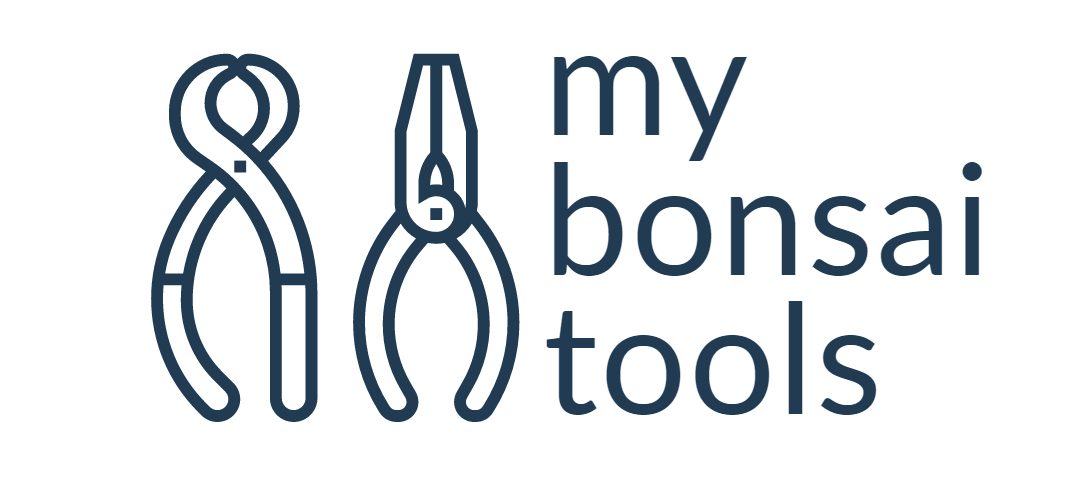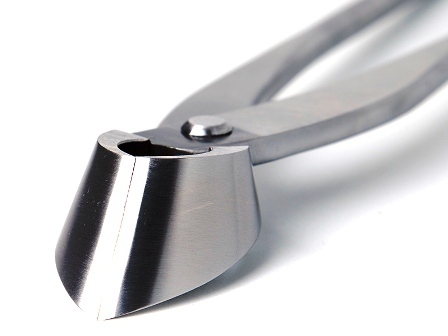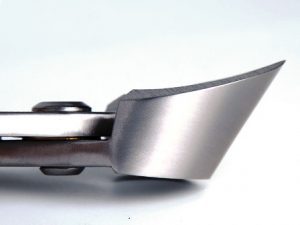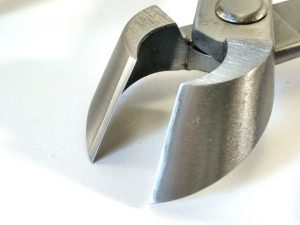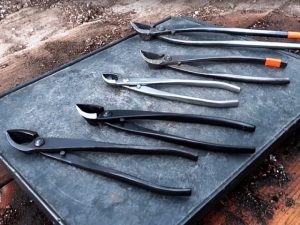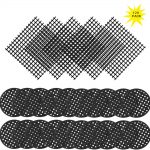The concave cutter is the single most important tool for bonsai use and for which there is no substitute.
It is the first important investment you should make, since it will have a lot of work and we must adjust our budget to get the best one.

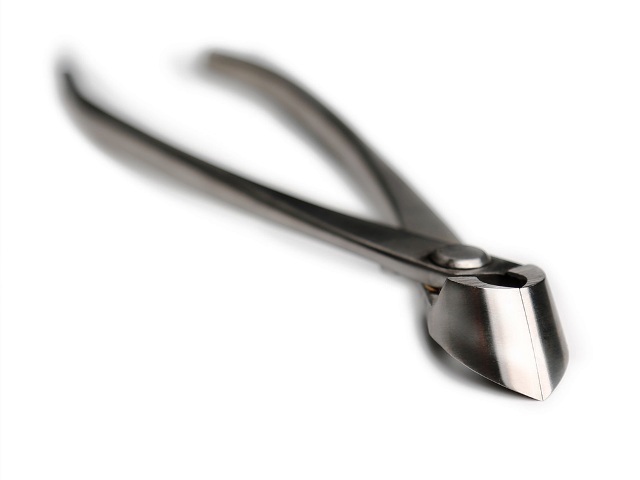
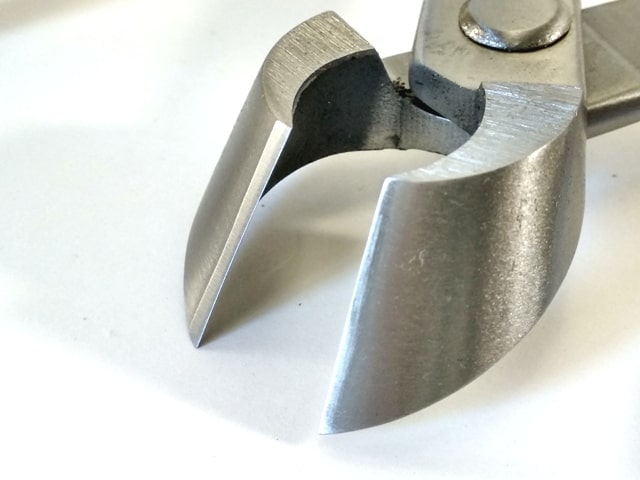
Designed for extreme edge pressure cuts into material of contact.

7″
175 mm.
8″
205 mm.
11″
260 mm.
Tian bonsai tools offers you three different product ranges
The standar range for begineers.
To begin the practice in the world of bonsai with supplies at the best market price
The professional product line.
Is aimed at bonsai fans with large collections and previous experience
Masters grade by tian bonsai tools.
The definitive equipment for the most demanding fans who demand the highest quality tool
8″ Concave cutter
7″ Concave cutter
Stainless steel branch cutter
This razor sharp tool is designed for cutting branches flush to the trunk.
The resulting wound can then heal over quickly with very little scarring. Will keep a sharp edge indefinitely when properly used and cared for.
The Concave Cutter is the single most important tool for bonsai use and for which there is no substitute. The 8″ version is considered the basic size. Similar in appearance to above
Considered the most important of all bonsai tools is this average size cutter, with concave design to make flush cuts in bonsai.
Known to majority of hobbyists, as the “most important of tools for bonsai.” mybonsaitools recommends this tool for those in need of creating smooth cuts into small, medium, or moderately large bonsai parts.
This tool can cut through weak to moderately strong wood and material.
Used mainly to make flush and minimal scarring cuts on bonsai tree or material at which cuts will be administered, preferably parts of the trunk or branches.
May also be used to remove large sections of roots and dead wood; however, we caution to monitor for rock, gravel, or wire. Although tools may penetrate these hard materials, the edges must stay uniformly sharp to perform in the way they are intended.
Applications include cutting branches, dead wood, heavy roots, and any tough parts of bonsai tree that require a flush and clean cut.
Considering the fact that pure blade pressure is making the cuts, have edges touch before removing to ensure a successful cut. After the cut is made, if the bonsai tree does not produce a protective sap, mybonsaitools recommends using a healing agent, also known as healing paste or cut paste, wound repair, or other similar putty-like material to seal affected area such as our cut pastes.
This will prevent pests and disease to the vulnerable living bark that has been exposed as a result.
Branch cutter. The concave one
Here we are goin to talk about some branch cutters so.The concave cutter is a fundamental tool for working bonsai. Every fan must have one in their toolbox.
The high carbon steel of this concave cutter will keep a sharp edge indefinitely when properly used and cared for. This tool is designed for cutting branches flush to the trunk so that the resulting wound can heal quickly with little scarring.
Carbon steel alloy
Different brands and models in the market there will be at least in three sizes, Some, even bigger.
175 mm.
7″
180mm.
200mm
8″
205mm
260mm
11″
300mm
14″
370 mm
And all these models can be found in carbon steel alloy and stainless steel.
Carbon steel alloy has a longer lasting edge and is easy to sharpen again, but stainless steel is resistant to corrosion.
It is important sort of discuss you know why you should have concave branch cutters, why they are important when you are doing bonsai and sort of give you a guide on maybe which ones to choose when you are shopping for one.
The main purpose in why you need a concave branch cutter is that you can cut heavy branches while shears will help you cut smaller branches like secondary branches, maybe some foliage but when it comes down to making a big cut on a big branch that you want to remove, you need something that is larger.
Then you will need to move on to something like a concave branch cutter and the concave branch cutter is just that, a branch cutter that it’s got concave shape to help you sort of cut through branches with little to no effort.
I have got inside my bagroll toolcase a couple different concave branch cutters of different brands and they are made in different materials.
Are made in either Japan or China so the first one is this, by tian bonsai brand and made in China stainless steel one, the one that you go find easily they go very affordable usually overright around twenty to twenty-five dollars and these ones are to accomplish exactly what you need.
And the other are cutters from Japan. Very nice, very powerful but a litle bit expensive, you know. If your budget is low, chinese tools by Tian Bonsai are a good choose.
They willl be able to make a cut exactly you know exactly where you want it no that is why it is shaped like this so you can get right up against the branch and cut flush.
You can see that right now and cut flush right against that the downside to it is that since.
Low cost bonsai tools brands.
There are many brands and manufacturers of Chinese tools. Do not be confused, be careful. They are a little bit cheap, the quality is not going to be as good would you like it.
If you buy tools of poor quality, when you get them for the first time, they will be a bit stiff, but they will loosen over time. What usually happens is that the union where both pieces come together will begin to separate and then begin to release.
Therefore, I advise you to trust Chinese brands with quality recognized as Tian Bonsai.
If you want to know in depth their tools, materials and manufacturing process, you have a link to the blog
But it that takes sort of a lot of time and happens after a lot of uses but that doesn’t mean that a bad tool, only are a cheap tool lower quality.
I mean if you’re just starting in bonsai, and you’re looking for affordable branch cutter the China carbon steel ones are good to go you can still cut through the branches and if you’re only using them once in a while.
You have got may be like one to two trees and you are cutting through just a branch here and there and these might be the way to go.
Another downside to the carbon steel ones is that they will rust if you leave them outside.
Spend some money in a good quality tool?
Yes, i think so. So if you are kind of where or whether or not you are going to keep them maintain or keep them inside you might want to stay away from some of these carbon steel tools. ¿Why?
I have got a carbon steel alloy made in china tool, was my first cutter and then if you move up and you want to go to stainless you’ve got this one too and what I’ve got here is a Tian Bonsai concave branch cutter.
About a stainless steel tool is that they won’t rest so if you leave them out, if you’ve got sprinklers going on and sometimes you know you leave your tools out these won’t rust.
You can leave them out int he rain and they will work just as good as when you leave them the day before, before rain now moving up
I have got my carbon steel alloy made in China and my stainless steel made in China both good tools.
If you’re just starting out these second ones are gonna be a little bit more expensive than these (carbon steel) guys but the you know I think that if you’re not exactly sure where you go place them, stainless steel is probably the way to go
Then we’re moving up to our main and Japan carbon steel tools.
I’ve got one of this, actually part of my tool kit. This is she say branch cutter and I have two sizes here right here.
I’ve got my little one and then the gigantic one and this is going to be the flush one as well it is not gonna be spherical these tools
I’ve been using these every single day constantly and it still got a good point right there. It still cuts perfectly flush you can see that it is exactly lined up perfectly still so isue
Wwhen I have my huge branches that I need to cut I will bring out the big one and I will use this to cut branches that are maybe about ytwo two-and-a-half inches in diameter and I will be able to cut throughit with this guy with no problems.
Then lastly I’ve got this new brand that I’m carrying it is the young Yagimitsu tool and I’ve been just using this just for a few days and is this great too.
Probably are more used to does she say one just because I’ve hadit for so long. But this made in Japan carbon stee alloy yogimitsu it’s the tool is it feels just as good it might end up at some point you know
It depends on how much you use it but the chinesse one should last forever. So far I’ve been kind of using the tian bonsai tools a lot. It has got a really good pointed lines up really nice right there.
Cutter is really flush, you can tear it, if you can hear that it’s very solid. I have worked with japanesse branch cutter and these ones are very good. I have actually enjoyed these a lot so far.
How select the concave cutter
I mean you’ve got all these tools at least all these brands all these manufacturers and all these different components and you have got these different materials which ones you end up choosing well when you are first starting out.
The made in China carbon steel alloy tools are actually really useful you can see that its joint kind of stiff you know it looses up over time but they still will cut the branch with no problem.
I mean if you drop them, from a certain height they might not with stand it but for the most part they are gonna do what you need so if you’re on a budget, the made in china carbon steel tools are actually a pretty good bet and then from there you’ve got to sort of weigh you know interms of cost maybe you’re jumping upabout $70 from the japan ones, you’ve got to make a bet whether or not you’re gonna go stainless steel where you’re going to mate in shower.
You are going to choose made in Japan or China, and that is sort of whereyou got to make your decision.
If you know you are going to take care of your tools I definitely go for the carbon steel ones. They feel a lot stronger, thy are a lot more durable in terms of power but in terms of water resistance it’s going to be the stainless steel one.
Then lastly you have got sizes. Between 175 mm and the big one (260mm). You can choose the standard one, which is a typical eight inch. I think that if you just starting out with one you probably only need the eight-inch one.
You can use a different technique for cutting the branch that you can for cutting bigger branches with the eight inches as long as you use the correct technique you can still cut big branches. Having the smaller one does not mean that you are relimited on some branches.
I mean if you got a branch that is going to be about three or four inches thick in diameter you might just want to just break out a saw and cut it with the saw but if you have got a smaller branch or something around you know one to two then you can definitely use the eighth inch.
Tools for bonsai work
Every single tool no matter the manufacturer even if you have got a very high quality brand if you mis use your tool there is a high likelihood that you’re going to break it and sometimes that doesn’t have to do with the quality.
If I’m going in here with the same I may in Japan carbon Steels were right here this yogimitsu a tool and I go and try to cut a rock or something like that it’s going to damage the tool you just knock.
It is just not going to do it, it is not made to do that so you’re going to end up damaging it is go damage both the made in Japan I’m still and the made in China carbon steel.
So make sure that you know you have some expectations of your tools to not get carried away try to cut things that you’re not supposed to another thing is if you drop them you know say you drop them from really high there’s a chance that you might get misaligned a little bit so you want to take care of your tools for the most part you know
they are going to you know the different quality levels on the tools are going to impact the performance for what it is sort of made for so.
If you’re made to cut branches you know that the performance levels are going to sort of improve as you go up in quality so when you start using these bring out much you say one here because it’s my favorite.
If you start using top quality, (but expensive) when you make the cut on the branch you can go this right here that’s like that’s sort of perfect you know flat point right there well let you go flush with the branch exactly so you can cut it so you can’t see the branch at all.
Smoother bu twith that with the angle of this and the shape of this clunky branch cutter you can make that cut really easily. Now for this bigger branch I can breakout the tool so if you’ve got a big garden concave branch cutter you can use this to cut that whole branch off in one shot.
How cut with the concave cutter
If you don’t have this you can use your branch cutter again the eight inch now of course you can use your mainkind of carbon steel use your stainless steel which ever one you want right now for this one.
I am just go down the street with my favorite tool two sheets a carbon steel and you can do two cuts.
You could probably do it in one cut, but if you’re not exactly sure you can do it, with two cuts you can do it too.
Try always it can diagonal cut okay?
That cuts off the bottom part like this like that and then you do another one from the top and an ankle and you create this little “V” and you have got that in kind of.
So basically you do one cut which it takes off the bottom half and then you do the other cut off the top which takes off the top and then that’s how you sort of cut a bigger branch with just the smaller branch cutter.
Now of course if you have got the big one you can just go around the whole thing , right around the whole thing like that and make one cut just. So if you are shopping for a branch cutter you have know some things to look out for you’ve got material you have got the sizing and you have got the country of origin it’s good to check on all three of those things especially the country of origin.
Some of these brands are a little bit elusive when it comes to exactly where they are made so that is good to double check that all right soIve included the link to these branch cutters in the description below.
I’ve got links to the carbon steel ones the stainless steel ones by tian bonsai tools.
Maintenance cut tools
I use these guys every day and the wear is kind of nice. I probably left them out in the rain for maybe just an hour before I realized that. It was raining and I brought them back in.
- With some machining oil or multiproposal hardware spray you will save branch cutter.
- Remove sap and keep sharp.
- Monitor possible debris accumulation at joint mechanisms.
- To keep sharp, a sharpening stone or other sharpening tools are advised.
- For sap removal, please do not use solvent, instead try soap and water first repetitively before resorting to more aggressive cleaning products.
See I’ve left these out in the rain maybe once and if you use some oil you can get it off so it is not the end of the world if you leave these out but you just gotta make sure you treat them right away.
For garden tools, stick with linseed oil or multi purpose oil from hardware store. You’ll also want to rub down saw wooden handles with a bit of linseed oil and the concave cutter and jin pliers union joint.
Regards and good shooping.

Designed for extreme edge pressure cuts into material of contact.
8″ Concave cutter
7″ Concave cutter
These tools for bonsai also interest you:
